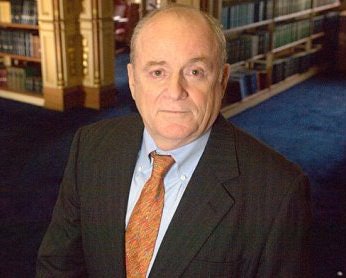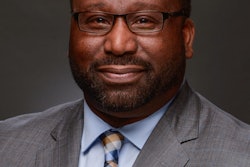 Anthony Carnevale of the Georgetown Center on Education and the Workforce in Washington, D.C., says the popularity of certificates is growing throughout the developed world.
Anthony Carnevale of the Georgetown Center on Education and the Workforce in Washington, D.C., says the popularity of certificates is growing throughout the developed world.More urgent. More crowded. More expensive. Also, more flexible and accessible to millions.
That, in a nutshell, is how higher education has changed around the world in the wake of the global financial crisis that struck five years ago, and the Great Recession that followed.
Here’s how it happened: Increasing financial pressures to get more people through higher education more efficiently opened the door to new technologies. Those technologies, in turn, have begun “unbundling” individual classes and degrees from traditional institutions much in the same way iTunes has unbundled songs from whole albums and the Internet is increasingly unbundling television shows and networks from bulky cable packages.
Here are four trends whose origins predate the Great Recession, but which have been unmistakably fueled by it:
- Certificates. Austerity by European governments and U.S. states hammered the budgets of public universities, leaving students to foot more of the bill. Many have responded by seeking faster and more affordable options, targeted to deliver immediate jobs. Certificates — bite-sized credentials typically in narrow, occupational fields — don’t count as formal degrees, but they’re cheaper and can produce a substantial salary boost. Their popularity has exploded in the United States — about 11 percent of American workers now have them, up from 2 percent in 1980. And while data is spotty, Anthony Carnevale of the Georgetown Center on Education and the Workforce in Washington, D.C., says their equivalents are growing elsewhere in the developed world, and possibly in developing countries, as well, where the inaccessibility of four-year degree programs is even more pressing.
- Competency-based learning. Until now, the main currency of academia has been the “credit hour” if you spend a certain amount of time in the classroom and pass the course, you earn credit. That may be changing with a broad-based move toward giving students credit for what they can demonstrate they know, regardless of how much time they spend in class. Earlier this year, the U.S. Department of Education signaled to colleges that they can get approval to collect federal aid dollars for competency-based programs, and such programs are starting to emerge. These options could save students time and money. As technology makes self-directed learning more available in the rest of the world, other countries will be pressed to consider similar moves.
- Accreditation. The very definition of a university may be changing. Traditionally, in the United States, the “club” of higher education has been guarded by a process of accreditation that’s essentially run by traditional universities themselves. Regional and national associations determine whether schools meet specific standards, and can continue to issue diplomas. The government wants more flexibility that would bring into the system specialized providers — companies that can offer targeted teaching even if they lack the full trappings of a traditional college. Many countries around the world envy the United States its accreditation system as a quality control. But they face similar, or even greater, challenges to ramp up higher education capacity quickly, so they also will be thinking outside their own traditional boxes.
- Pressure to cut costs and “scale up” teaching helped pave the way for the popularity of MOOCs, or “Massive Open Online Courses,” taught by elite universities. Two leading platforms, Coursera and edX, are closing in on 5 million users worldwide. These courses started out as a way for learners to sample teaching by famous professors at top universities, but options for gaining academic credit are beginning to emerge, and they are quickly infiltrating the teaching at traditional universities. To some critics, the MOOCs are little more than glorified online lectures, and dangerous ones at that; their cost-cutting promises could become an excuse for politicians to cut funding for higher education even further. MOOCs also have huge drop-out rates, with estimates that 90 percent who sign up fail to finish. Some evidence is emerging that mixing MOOCs and in-person learning can be effective. Close to half the students who’ve signed up for edX and Coursera come from developing countries, where demand for higher education massively outstrips supply.


















